- in Health , Skin Care , Weight-Loss by tony
How to add more fruit to your diet

Currently where eating healthy has become so important, so many people do not like to eat fruit and vegetables. Even though they know it is good for them, they still prefer not to eat it. It can be very difficult getting used to a healthy lifestyle diet if all you are used to, is take away fast food.
More...
Don’t groan if you think that you will have to eat more fruits during the day and evening because there is a very easy solution that will be fun for the whole family.
I think smoothies are one of the greatest inventions of our time. I know you get a lot of fruit juices and they are truly great, but some of the manufacturers do add a lot of sugar. Try to keep the sugar intake low by making your own.
All you need is a blender, or smoothie maker and fruit. It is that simple. Try to play with the flavors. You can add whatever you like. If you do not try it, how will you know if you like it or not?
My husband and I played around with some flavors the past weekend and I can tell you, it tasted great. You can get recipe books for how to make smoothies, but as I said, make it up as you go along. First, we tried mixing banana, strawberries, kiwi fruit, grapes and plain yoghurt. It tasted wonderful. This is not a sweet combination, so if you have a sweet tooth, maybe you should try our second recipe.
The next one we tried, we used a mango, banana, yellow melon and yoghurt. This was ‘n sweeter option, but the banana was a little strong. Maybe you should try to use only halve a banana or replace it with some other fruit. We thought that next time we will try to replace it with a strawberry or two. Don’t know how it will taste, but we will try.
What Is Juicing
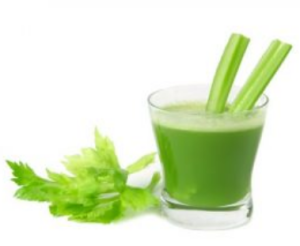
Juicing is a popular health trend which involves extracting the juice from fruits and vegetables using a specialist juicer. Proponents of juicing claim that it’s a much more efficient way to enjoy your fruits and vegetables and allows you to get the full nutritional value from them.
However, others have claimed that the benefits of juicing are limited and it’s not worth the extra cost and preparation time. In this article I’m going to be looking at both sides of the argument and revealing whether juicing is really worth it.
Why Juice?
There are plenty of reasons you should be making juicing part of your lifestyle and I have highlighted these in the list below:
1) Juicing Is Good For You:
While the health benefits of juicing are sometimes overhyped, there’s no denying that drinking fresh, natural fruit and vegetable juices is very good for you. These juices supply your body with a high level of vitamins, minerals and phytonutrients which support your health in countless ways.
By consuming these nutrients in juice form instead of whole form, your body can absorb them much more easily which gives you a greater nutritional benefit.
2) Juicing Cuts Down Your Consumption Time:
Eating multiple servings of fruits and vegetables each day takes time and if you’re busy, you may simply not have the time to eat them whole. However, by juicing your fruits and vegetables, you’re left with a drink that you can enjoy in just a few seconds.
3) Juices Are Portable:
If you’re constantly on the move, carrying multiple servings of fruits and vegetables with you may not be practical. However, fruit and vegetable juices can easily be stored in a sealable bottle or flask and are a much more convenient, portable solution.
Are There Any Drawbacks To Juicing?
Although juicing has a number of fantastic benefits, it also has its drawbacks. I have listed three of the main drawbacks of juicing below:
1) Juices Are Relatively High In Calories:
Unlike whole fruits, whole vegetables and smoothies, juices contain no fiber. Fiber is an indigestible, zero calorie nutrient which is bulky and filling. By removing the fiber, you’re left with a juice that contains a higher concentration of calories and is less likely to satisfy your appetite.
2) Juices Is Expensive:
Since juicing removes the fiber, there’s a lot of waste which means you need a relatively large amount of fruits and vegetables to produce sufficient levels of juice. If you’re juicing large volumes regularly, the cost of producing this juice can really add up.
3) Juicing Is Time Consuming:
While juice is very quick to drink, juicing itself is a time consuming process. If you’re juicing a couple of glasses each morning, you can expect to spend around 15 minutes a day juicing and cleaning up and if you’re looking to juice higher volumes than this, the total time commitment can really add up.
Summary
Juicing is a fantastic way to supplement a healthy diet that’s already rich in fruits and vegetables and benefit from additional nutrients.
Since juices don’t contain fiber, they’re not a complete replacement for whole fruits and vegetables, so you do need to make sure your diet still contains five portions of these per day. However, as long as you do this, juicing is a top choice that will greatly benefit your health.
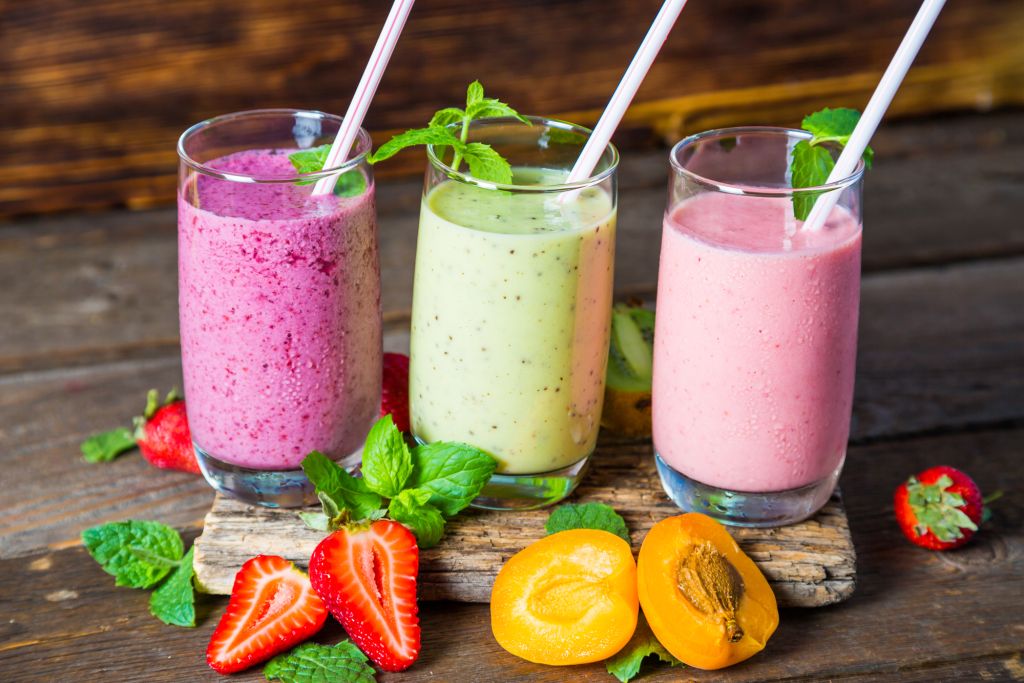
What Are Smoothies
Smoothies are a type of smooth, blended drink that contain fresh fruit and other assorted ingredients. They are extremely popular in health and fitness circles due to their great taste, high nutritional value and low calorie count.
However, since they’re sweet, satisfying and refreshing, they also have a wide general appeal. In this article I’m going to be taking a deeper look at smoothies, the ingredients they contain and the reasons why they’re so popular.
What’s in A Smoothie
Smoothies typically contain a combination of ice and fruit. They may also contain fruit juice, milk, nuts, protein powder, seeds spices and yogurt.
Since they’re made using natural ingredients but also contain a good amount of ice, they’re relatively low in calories and very hydrating.
In addition to this, they have a very high fiber, vitamin, mineral and phytonutrient content and enhance your health by supporting your vital organs, protecting against chronic disease and much more.
Why Are Smoothies So Popular
1) They’re Versatile:
Smoothies are extremely versatile and you can make a wide range of smoothies based on your personal preferences and tastes. Depending on the ingredients you use, you can make creamy smoothies, crunchy smoothies, fizzy smoothies, slushy smoothies, sweet smoothies and much more, so you’re bound to find plenty of smoothies that you love.
2) They’re Great for Weight Loss:
As mentioned above, smoothies contain lots of fiber but very few calories. As a result, they’re extremely filling and a great way to satisfy your appetite and drinking them won’t cause you to pile on the pounds.
3) They’re Healthy:
Due to their high nutrient content, smoothies are very good for your health and a much better choice than milkshakes or soda.
4) They Save Time:
If you’re busy, you may not have time to sit down and eat a few portions of fruit. However, drinking your fruits in liquid form is much quicker and even if you don’t have much time to spare, you can always enjoy a smoothie.
5) They’re Portable:
While certain fruits (such as apples and bananas) are quite portable, other fruits (such as blueberries, mangos and watermelons) are less portable. Smoothies take care of this problem and allow you to enjoy any fruit while you’re on the move. Simply blend it up, place the smoothie in a sealable bottle or flask and enjoy it whenever you want.
How Do You Make Smoothies
Making smoothies is a relatively simple process. If you don’t own one already, you’ll need to buy a blender. Then simply place your ingredients in the blender and blend them until the smoothie reaches your desired consistency.
For optimal results, put the ice in last when you’re making a smoothie. Doing this will prevent the ice from melting and ensure that you get a frosty smoothie instead of a watery one.
Summary
I hope this article has helped introduce you to the world of smoothies. As you can see, they’re a great way to satisfy your sweet tooth and fill up on nutrients while you’re on the move. So if you haven’t done so already, go grab your blender, get blending and enjoy a healthy, tasty smoothie today.

Top 10 Smoothie Making Tips
On the surface, making smoothies is a simple process. However, if you want to make a super smoothie every time, there a few tips and tricks that you need to implement. In this article I’ll be sharing 10 of these smoothie making tips with you and showing you how to blend like a pro.
1) Be Creative with Your Ice Cubes
Ice cubes are a staple ingredient in any smoothie but that doesn’t mean you have to use water every time. Coconut water, fruit juices and tea are all excellent alternatives to water which can be frozen just as easily and make perfect ice cubes.
2) Clean the Blender Straight Away
Cleaning may not be the most enjoyable part of the smoothie making process but the longer you leave it, the harder it gets.
Fruit puree takes just a few minutes to clean off the blender while it’s still moist. However, if you let it harden, it’s a much more difficult task and requires lots of soaking and scrubbing.
So even if you don’t feel like it, clean your blender as soon as you’re finished blending.
3) Consider Using Herbs & Spices
Herbs and spices are a fantastic way to infuse your smoothies with extra flavor and nutrition. Sweet spices such as cinnamon and nutmeg go down particularly well in most smoothies. However, herbs and hotter spices can also work well depending on the other ingredients in your smoothie.
4) Don’t Overfill Your Blender
This may sound like common sense but many people do pack their blenders to the brim and are then left with uneven, poorly blended smoothies. For the best results, always leave a small gap at the top of your blender. By doing this you’ll get a much consistent, evenly blended smoothie.
5) Keep an Eye On Your Total Calories
Another mistake a lot of people make when blending up smoothies is focusing on the healthy, natural aspect and ignoring the overall calories they contain.
While smoothies are very good for you and contain high levels of many health boosting nutrients, the calories can quickly add up if you don’t pay attention to them.
So make sure you’re aware of the total calories in your smoothie and if the number gets too high, swap out some ingredients for ice.
6) Put the Ice In Last
If you put the ice in the blender first, it may get over blended and make the smoothie too watery. By putting the ice in last, you ensure that the ice gets perfectly chopped and the smoothie stays frosty and icy.
7) Start Off Slow
If you own a variable speed blender, start off at the lowest speed and slowly increase the speed to high. If you don’t own a variable speed blender, use the pulse function and blend your ingredients in short bursts. Doing this will prevent air bubbles forming in your smoothie and allow all the ingredients to be chopped evenly and efficiently.
8) Use Liquids Sparingly
While fruit juices and milk make a great addition to smoothies, it’s best to use them sparingly. You can always add more liquid if the smoothie’s too thick but once it’s too watery, you can’t go back.
9) Use A Range of Ingredients
While it’s fine to have your favorite ingredients, blending up the same smoothie every single time is going to limit the nutritional benefit you get from them. So make sure you’re blending up a variety of ingredients each week which provide you with a mixture of fiber, vitamins, minerals, phytonutrients, healthy fats and protein. Doing this will give you the maximum nutritional punch and also allow you to enjoy a range of great tasting smoothies.
10) Use Organic Fruits
Organic fruits may be more expensive than their non-organic counterparts but the extra cost is well worth it. Not only do they make your smoothies taste better but they also contain more nutrients and fewer harmful chemicals which means they’re much healthier too.
Summary
The smoothie making tips in this article may sound simple but they make a huge difference when it comes to the consistency, taste, nutritional value and flavor of your smoothie.
So next time you grab your blender, make sure you read and follow these tips and make your best tasting smoothie to date.
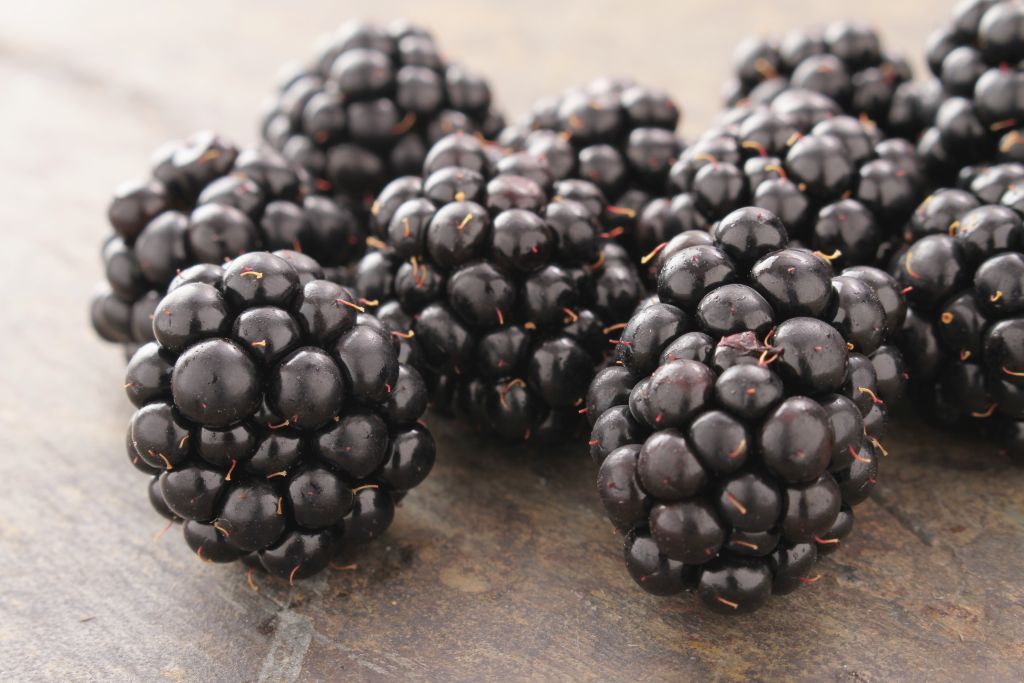
fresh blackberries berry fruit
Top 10 Smoothie Ingredients
When it comes to making a smoothie, there are so many different ingredients to choose from. There are countless different types of fruits, nuts and seeds and that’s before you even get started with liquid ingredients. That’s why today I’m going to help you narrow this choice by highlighting 10 of the top smoothie ingredients.
Almonds
Almonds are a concentrated source of calories, so you do need to use them sparingly in your smoothies. However, a 1 ounce serving adds lots of healthy fats, magnesium, manganese, vitamin B2 and vitamin E at a cost of just 161 calories. In addition to this, almonds give your smoothies a thick, crunchy texture.
Banana
A large banana contains just 121 calories along with high levels of fiber, manganese, potassium, vitamin B6 and vitamin C. It’s also less juicy than other fruits and gives your smoothies a satisfying thick and fluffy texture.
Blueberries
Blueberries contain just 84 calories per cup and are packed full of health boosting anthocyanins, fiber, manganese, vitamin C and vitamin K. They’re one of the sweetest and juiciest fruits around and a great way to naturally sweeten your smoothies without loading up on calories.
Flaxseeds
Like almonds, flaxseeds are a calorie rich food, so you do need to limit the amount you put in your smoothies. However, a 1 ounce serving contains a reasonable 150 calories along with plenty of copper, fiber, magnesium, manganese, phosphorus and vitamin B1. Flaxseeds also give your smoothies a satisfying crunchy texture.
Greek Yogurt
Greek yogurt weighs in at 130 calories per cup and supplies you with lots of calcium, protein and saturated fat. It’s a perfect addition if you want to thicken up your smoothies.
Ice
Ice is an excellent smoothie ingredient for a number of reasons. Since it contains zero calories, it’s a great way to lighten your smoothies and minimize the effect they have on your waistline. In addition to this, ice makes your smoothies cool, refreshing and hydrating which is just what you want in the hot summer weather.
Milk
Milk packs 146 calories per cup along with plenty of calcium, phosphorus, vitamin B2, vitamin B12 and vitamin D. It’s also a top source of protein and saturated fat and gives your smoothies a creamy nutritional punch.
Pineapple
Pineapple contains just 82 calories per cup and is a great source of copper, fiber, manganese, vitamin B1, vitamin B6 and vitamin C. The tangy taste also gives your smoothies a unique tropical twist.
Soda Water
Soda water is a brilliant choice if you want to add some fizz to your smoothie. It also contains zero calories, so is an excellent way to reduce the total calories in your smoothies.
Whey Protein Powder
Whey protein powder packs a relatively high 100 calories per 28g scoop. However, around 80% of these calories are high quality protein which makes it a great smoothie addition if you’re looking to pack on muscle. It’s also an excellent choice if you want to make chocolate or vanilla smoothies without loading up on sugar.
Summary
While there are plenty of other ingredients you can use in your smoothies, the 10 listed in this article are a great place to start. So if you’re ever stuck for ideas, come back and re-read this article, get some inspiration and then get blending up a super tasty smoothie.
Juicing vs Smoothies
Juices and smoothies are two popular fruit and vegetable based drinks that have many similarities but also a number of subtle differences. Smoothies are made from finely chopped pieces of fruit and/or vegetables along with other ingredients and have a smooth but bulky consistency.
Juices on the other hand contain only fruit and vegetable juices with the pulp getting removed from the juice during the juicing process. In this article I’m going to be putting these two healthy drinks side by side and looking at the key differences between them.
1) Calories
Juices generally pack more calories per glass than smoothies because the juicing process removes the zero calorie fiber. If you’re juicing mainly fruits, the calories in your juices can really add up and some fruit juices contain more calories than a can of soda. However, if you juice a good proportion of vegetables, you can reduce the total calories in your juice considerably.
As mentioned above, smoothies are generally the lower calorie option as they contain zero calorie fiber along with generous helpings of ice. However, this isn’t always the case because some smoothies contain higher calorie ingredients such as yogurt, nuts and seeds.
2) Cost
Juicers are generally more expensive than blenders to buy. In addition to this, since juicing removes the pulp, you need more fruits and vegetables to make a glass of juice than you do to make a glass of smoothie, so the cost of ingredients is higher when juicing too.
3) Hydration
Since juice contains no bulk or pulp, it’s a much more hydrating option. While smoothies still contain plenty of water and do a great job of quenching your thirst, juices give you optimal hydration.
4) Nutrition
Both juices and smoothies have their own merits when it comes to nutrition. Since juices contain no fiber, they allow your body to absorb the vitamins, minerals and phytonutrients from the fruits and vegetables much more efficiently.
In addition to this, since vegetable juices are much more palatable than vegetable smoothies, you can enjoy a wider range of vegetable nutrients by juicing.
However, the lack of fiber in juices means that you do miss out on its nutritional benefits which include better blood glucose control, improved bowel health, a reduced risk of chronic disease and much more.
Smoothies contain fiber, so you get to enjoy all these benefits. You can also add foods that contain healthy fats and protein to your smoothies and boost their nutritional value.
However, smoothies do contain a lower concentration of vitamins, minerals and phytonutrients than juices and your body absorbs them less efficiently in this form.
5) Taste
Juices generally have a more concentrated taste than smoothies. They’re also much lighter and less filling. Smoothies have a less distinct flavor than juices but have a much bulkier texture which can be quite filling.
6) Time
Blending is a simpler process than juicing, so it takes less time to prepare a smoothie than it does a juice. Blenders are also quicker to clean than juicers. However, juices are easier and faster to drink than smoothies due to their lighter, less bulky nature.
Summary
I hope this article has helped you determine the difference between juices and smoothies. Both drinks have a positive effect on your health and can both be enjoyed on a regular basis. However, they also both have their own individual merits, so you may personally prefer one type over the other.
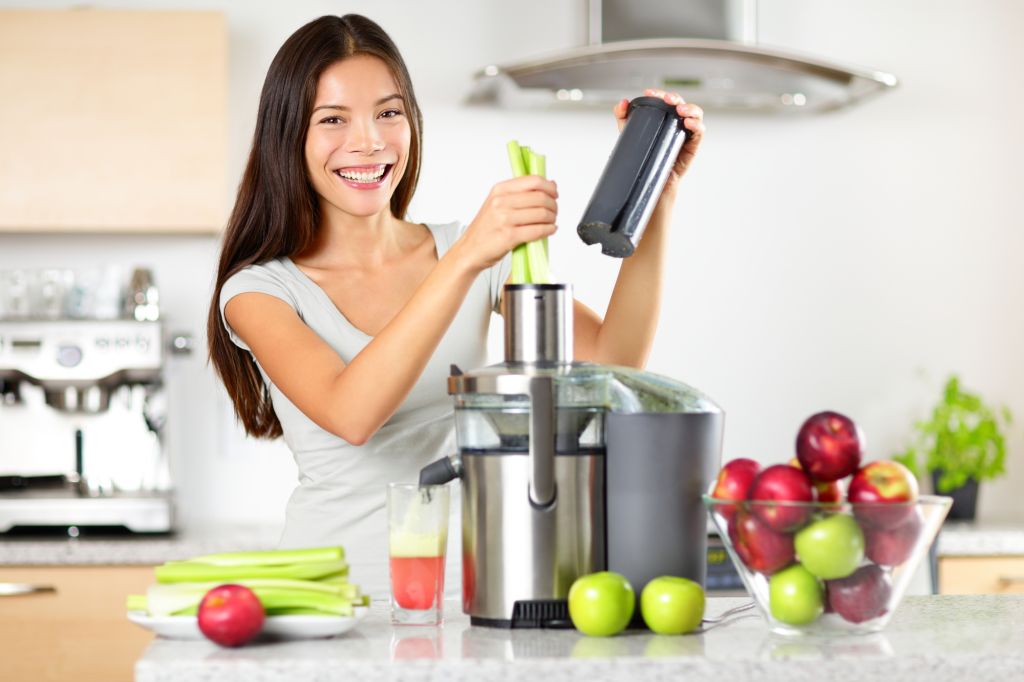
The Health Benefits Of Juicing
Juicing and its health benefits have received a huge amount of publicity in recent years with celebrities, fitness gurus, personal trainers and more praising the positive effects of juicing. In this article I’m going to be taking a deeper look at the buzz behind juicing and listing all its health benefits.
1) Juicing Improves Your Overall Health
The main benefit of juicing is that it provides you with a plentiful supply of vitamins, minerals and phytonutrients.
These nutrients are all essential and support good health in countless ways. Some of their main functions include acting as antioxidants, boosting your blood health, keeping your immune system strong, protecting against chronic diseases (such as cancer and diabetes), supporting your vital organs and strengthening your bones. Therefore, by juicing regularly, you’ll give your body all the nutrients it needs and you’re your overall health a significant lift.
2) Juicing Gives You The Maximum Nutritional Value
When you eat fruits and vegetables, your body extracts the nutrients from them during the digestive process. However, some of these nutrients are naturally lost and excreted during this process, so you don’t get the full nutritional value from the fruits and vegetables.
Juicing extracts these health boosting nutrients into a liquid form and makes them much easier for your body to absorb. As a result, you lose fewer nutrients by juicing and get maximum nutritional value from the fruits and vegetables by juicing.
3) Juicing Allows You To Enjoy A Wide Range Of Fruits & Vegetables
Another great thing about juicing is that it allows you to benefit from the nutrients in fruits and vegetables that you would normally never consider eating whole. If there are certain fruits and vegetables you don’t enjoy eating, simply throw them in your juicer with some of your other favorites and you’ll get all their nutritional value in a great tasting glass.
4) Juicing Saves Time
Vegetables are naturally bulky, require lots of chewing and are relatively time consuming to eat. However, by juicing your vegetables you can get multiple servings in one easy to drink glass.
5) Juicing Keeps You Hydrated
Since juices are primarily water, regular juicing is a great way to stay hydrated. Staying hydrated is essential for good health and by being properly hydrated you allow your body to efficiently flush toxins out of your system and also ensure that all your cells and vital organs function optimally.
Summary
If you’re not juicing already, you’re missing out on some serious benefits. While it’s not a complete replacement for whole fruits and vegetables, it’s a fantastic way to top up on additional nutrients and enjoy a greater range of health benefits.
So go grab your juicer and start filling up on tasty, natural, nutrient packed juice today.
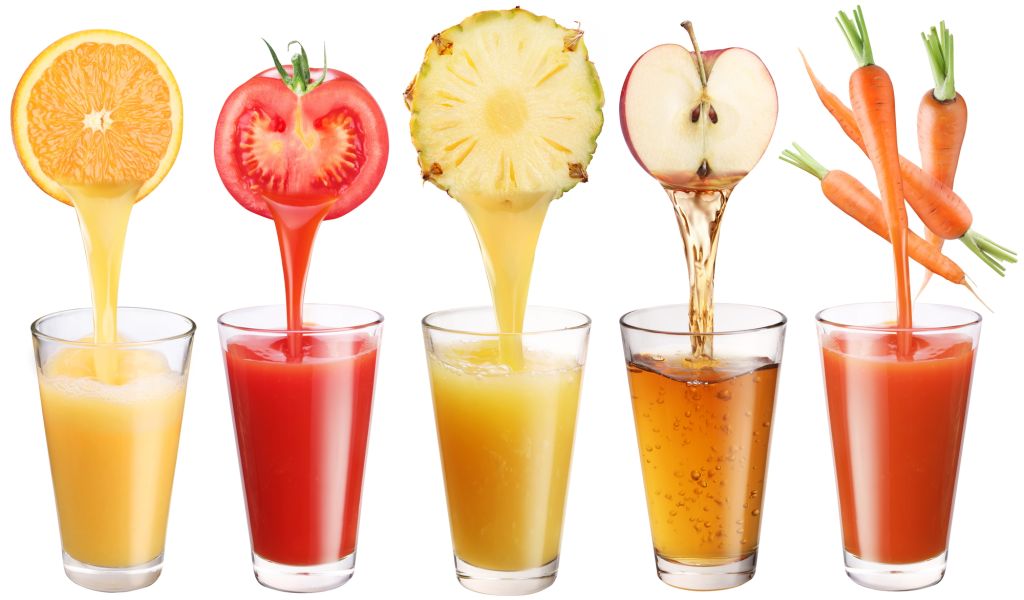
The Health Benefits Of Smoothies
When it comes to health, smoothies are an excellent choice. They contain lots of natural ingredients and are a great source of vitamins, minerals and phytonutrients. In this article I’m going to be taking a deeper look at the nutrients in smoothies and discussing all their health benefits.
1) Improved Bowel Health
Since smoothies are based around fresh fruit and often also incorporate vegetables, nuts and seeds, they’re packed full of fiber. Fiber keeps your bowels healthy in two main ways. First, it promotes regular bowel movements and reduces your risk of constipation. Second, it reduces your risk of bowl disease by clearing waste materials out of the bowels and preventing harmful toxins from accumulating.
2) Healthier Cells & Vital Organs
The vitamins, minerals and phytonutrients in smoothies support all the cells and vital organs in your body. Therefore, by consuming smoothies regularly, you can enjoy healthy blood, healthy skin, optimal brain function, strong bones, strong vision, a reduced risk of organ disease and much more.
3) Stronger Muscles
If you use Greek yogurt, milk, nuts, seeds or another protein rich ingredient in your smoothies, you can also benefit from stronger muscles. Protein is a key muscle building nutrient which constructs, maintains and repairs all your body’s cells. Therefore, by drinking protein packed smoothies, you can give your muscles the fuel they need to stay strong, effective and healthy.
4) Reduced Risk Of Chronic Disease
While no one knows what causes chronic diseases and there are no sure fire ways to protect against them, studies have shown a strong positive correlation between healthy eating and a reduced risk of chronic disease.
In fact, some research has shown you can slash your chronic disease risk by a third, simply by filling up on foods that are rich in vitamins, minerals and phytonutrients.
Smoothies contain high levels of all these nutrients, so by drinking them regularly you protect against cancer, diabetes and many more chronic diseases.
5) Hydration
Most smoothies contain at least a quarter ice. In addition to this, the fruits they contain also have a very high water content.
Therefore, by drinking smoothies on a regular basis, you can ensure that you stay hydrated. This has a knock on effect on your health and allows your body to function optimally at all times.
Summary
As you can see, smoothies have countless health benefits. They support healthy digestion, keep your vital organs healthy, keep you hydrated and much more.
So if smoothies aren’t currently part of your diet, grab a blender and start enjoying their great taste and health boosting properties today.
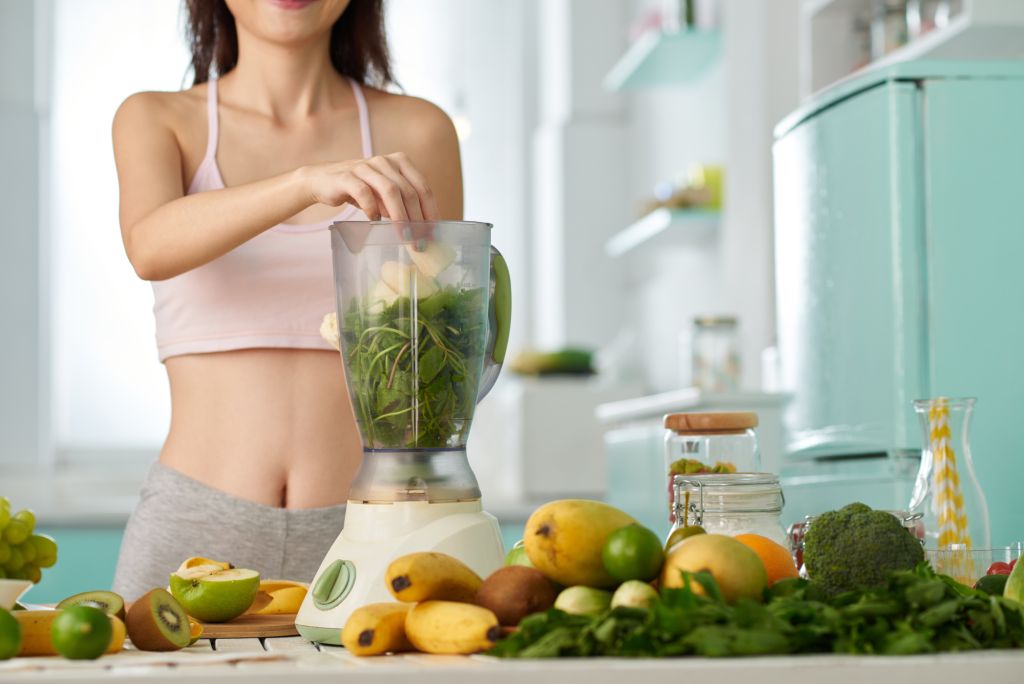
Things To Consider Before You Start Juicing
Juicing is one of the most popular health trends around with health magazines, websites and professionals all touting the benefits of juicing.
While it’s true that juicing definitely has a positive effect on your health, it’s not the magic drink that some people would have you believe. In this article I’m going to be looking beyond the hype of juicing and listing some of the main things you’ll want to consider before you get started.
1) Juices Don’t Contain Fiber
One of the main drawbacks of juicing is that you lose the fiber that you’d otherwise consume if you ate the fruits and vegetables whole.
Fiber keeps your bowels healthy by supporting regular bowel movements and removing waste products from your digestive tract. It also reduces your heart disease risk, protects against cancer and helps your body regulate its blood glucose levels. By juicing, you miss out on these numerous health benefits.
2) Fruit Juices Are High In Sugar
Fruits are mainly comprised of fructose, fiber and water. Juicing removes the fiber and leaves you with a relatively high calorie mix of fructose and water.
While you can reduce the calorie content of your juices by adding in vegetable juice and one glass of fruit juice per day isn’t going to have a noticeable impact on your weight loss success, it’s still something to be aware of.
3) Juicing Is Expensive
If you want to get the most nutritional value when juicing, you need to buy organic fruits and vegetables which are more expensive than their non-organic counterparts. In addition to this, you need to buy these organic fruits and vegetables in quantities large enough to produce sufficient juice.
If you’re juicing on a daily basis, this can add up to quite a substantial cost and if you’re on a budget, it’s something to bear in mind.
4) Juicing Is Time Consuming
One final thing to be aware of before you start juicing is that it is time consuming if you’re doing it regularly. It takes around 15 minutes to make two glasses of juice and clean the juicer, so if you’re planning to juice high volumes daily this can add up to a significant daily time commitment.
Summary
I hope this article’s given you a more balanced view of juicing. While it’s undoubtedly a fantastic source of nutrients and can boost your health in countless ways, you need to be aware of the facts listed above before you get started. As long as none of them are a deal breaker for you, you’ll love juicing.
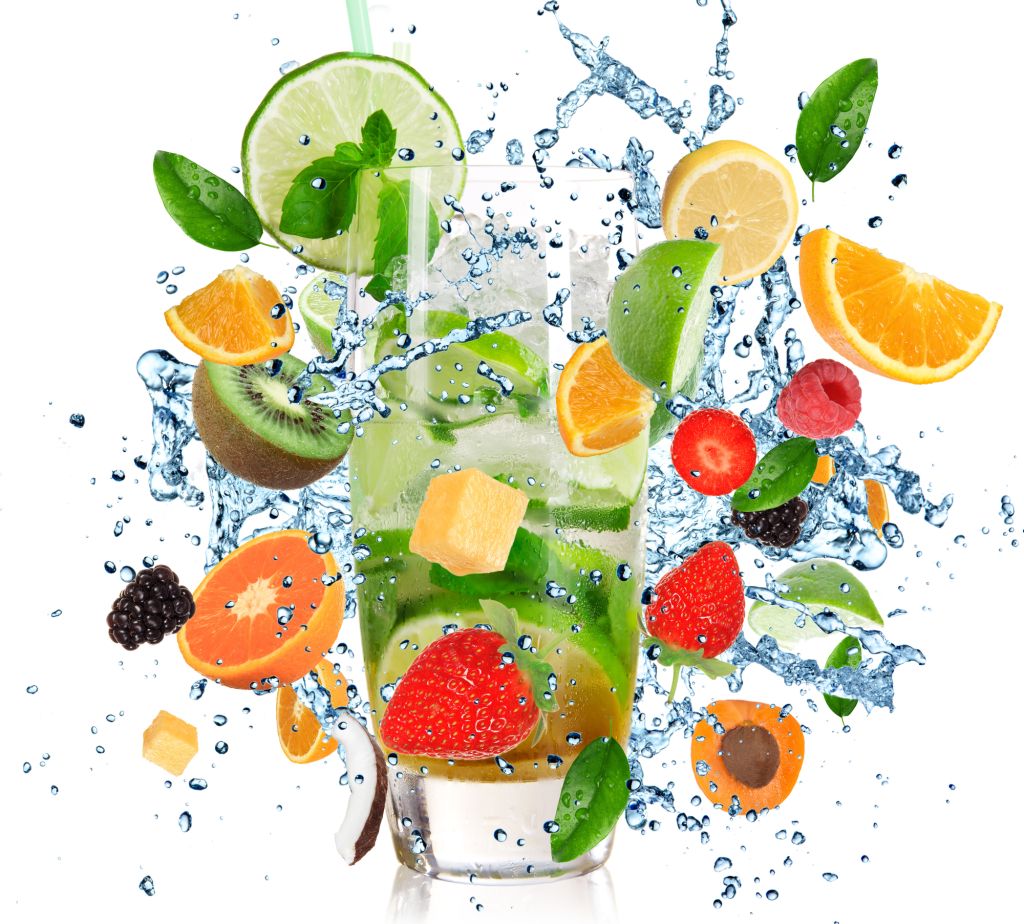
Top 10 Juicing Ingredients
Part of the fun of juicing is experimenting with different fruits and vegetables until you find a perfect combination. However, doing this without any guidance can lead to you creating a lot of funky tasting juices which you simply cannot finish.
That’s why today I’m going to be sharing with you 10 of the top ingredients you should be juicing along with recommendations of what goes best with each one.
1) Beets
Beets are packed full of iron, magnesium, manganese, potassium, vitamin B9 and vitamin C. In addition to this, they contain just 58 calories per cup. Studies have shown that beet juice is a powerful cancer fighter and also does a great job of protecting against heart disease, cleansing the blood and boosting the kidneys.
Juice Beets With: Apples, celery, cucumber and carrots.
2) Carrots
Carrots contain high levels of manganese, potassium, vitamin A, vitamin B1, vitamin B3, vitamin B6, vitamin B9, vitamin C and vitamin K. In addition to this, they contain just 30 calories per large carrot. In terms of health, carrot juice has been linked with healthy skin, strong vision and optimal liver health.
Juice Carrots With: Apples, cucumbers and tomatoes.
3) Cayenne
Cayenne is a hot, spicy pepper that contains 17 calories per teaspoon and is packed full of capsaicin, iron, magnesium, manganese, potassium, vitamin A, vitamin B2, vitamin B3, vitamin B6, vitamin C, vitamin E and vitamin K. It’s a great way to give your juices a kick and it also has lots of health benefits which include boosting your metabolism, reducing inflammation in your body and promoting healthy skin.
Juice Cayenne With: Carrots, red bell peppers and tomatoes.
4) Celery
Celery is extremely low in calories (just 16 calories per cup) and a great addition if you’re trying to lighten your juice. It’s also a nutritional powerhouse and loaded with calcium, magnesium, manganese, phosphorus, potassium, vitamin A, vitamin B2, vitamin B5, vitamin B6, vitamin B9, vitamin C and vitamin K. Celery juice has numerous health benefits which include calming your nerves, cleansing the digestive system, promoting restful sleep and protecting against gout.
Juice Celery With: Anything.
5) Cinnamon
Cinnamon is both sweet and spicy and goes great with fruit juices. It contains high levels of calcium, iron, manganese and vitamin K and weighs in at 19 calories per teaspoon. In terms of health benefits, it’s been linked with cancer prevention, improved blood glucose control and a healthier brain.
Juice Cinnamon With: Apples, blueberries and grapes.
6) Cucumbers
Cucumbers are another light choice and contain only 45 calories each. They’re packed full of magnesium, manganese, phosphorus, potassium, vitamin A, vitamin B5, vitamin C and vitamin K. Studies have shown that cucumber juice can boost your energy levels, keep your skin and hair healthy, protect against cancer and support healthy joints.
Juice Cucumbers With: Carrots, celery, lettuce and spinach.
7) Granny Smith Apples
Granny smith apples yield a sweet, crisp juice and contain 80 calories per medium apple. They’re also a top source of vitamin C. Research suggests that apple juice boosts both the brain and the heart.
Juice Granny Smith Apples With: Anything.
8) Mangos
Mangos produce a sweet, refreshing, tropical juice and also provide you with lots of vitamin A, vitamin B6 and vitamin C. They contain 107 calories per cup and the juice supports healthy growth, healthy skin and strong vision.
Juice Mangos With: Anything.
9) Mint Leaves
Mint leaves contain just 20 calories per ounce and are packed full of calcium, copper, iron, magnesium, manganese, phosphorus, potassium, vitamin A, vitamin B2, vitamin B3, vitamin B9, vitamin C and zinc. Mint juice has a tingly, cooling taste and cleanses the blood, soothes chronic pain and stimulates digestion.
Juice Mint Leaves With: Celery, cucumber, lime, lemons and oranges.
10) Tomatoes
Tomatoes are packed full of copper, lycopene, magnesium, manganese, phosphorus, potassium, vitamin A, vitamin B1, vitamin B3, vitamin B6, vitamin B9, vitamin C, vitamin E and vitamin K. A large tomato contains just 33 calories and yields a mild but pleasant juice. Studies have shown that tomato juice can protect against cancer and heart disease while also keeping your blood vessels healthy.
Juice Tomatoes With: Celery, carrots, lettuce and radishes.
Summary
When it comes to making your own natural juices. While the 10 ingredients listed aren’t the only ones you should be juicing, you should aim to incorporate at least one of them into any juice you make.
By doing this and following the advice above, you’ll be able to make a highly nutritious, great tasting juice every time.
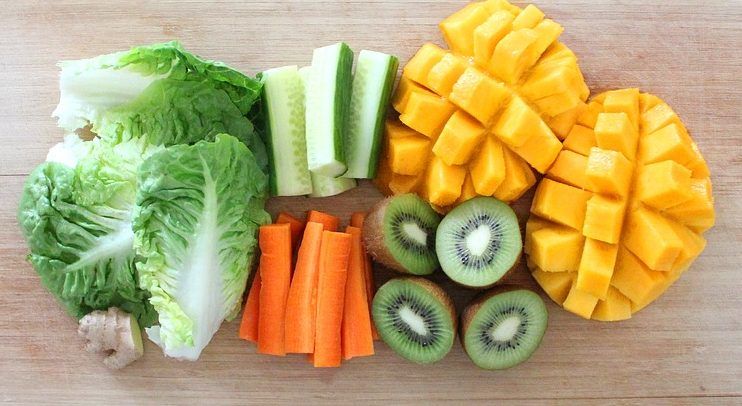
Top 10 Juicing Tips
Juicing may seem like a simple process but if you get it wrong, you can miss out on lots of flavor and nutrition.
The good news is that once you know the tips and tricks for making a perfect juice, you’ll be able to do it every time. In this article I’m going to be sharing 10 top juicing tips with you which will ensure that every juice you make tastes great and is packed full of nutrients.
1) Add Some Herbs or Spices
Herbs and spices such as cayenne, cinnamon, ginger and mint are a great way to add some extra flavor to your juice. Different herbs and spices work best with different fruits and vegetables. For example, cinnamon goes very well with apple while cayenne perfectly complements red vegetables and mint works well with citrus fruits. Simply start experimenting and you’ll quickly find what works best for you.
2) Be Creative
It may be natural to stick with what you know and only juice certain fruits and vegetables. However, by doing this you’re seriously limiting the nutritional benefit you get from juicing. So be creative, constantly try juicing new fruits and vegetables and enjoy all the nutrients they have to offer.
3) Buy Organic Fruits & Vegetables
While you may be tempted to save some cash and avoid organic fruits and vegetables, doing this has a noticeable negative impact on the flavor of the finished juice. Going organic may cost a little more but it makes a huge difference to the taste of the finished juice and is a worthwhile investment.
4) Clean the Juicer Immediately After Juicing
While it’s tempting to leave the cleaning till later, by doing this you risk staining your juicer and you also allow the leftover pulp to harden which makes the cleaning a much more difficult task when you do get to it. So even if cleaning’s not your favorite thing in the world, getting it done immediately after juicing is the quickest and easiest option.
5) Don’t Juice Low Water Fruits
Low water fruits such as avocados and bananas do not juice well and will clog up your juicer while yielding little to no juice. If you want to enjoy these fruits in your juices, finely blend them and then add them to the finished juice.
6) Drink Your Juice Quickly
Fresh fruit and vegetable juices lose their nutritional value very quickly. To get the most nutrition out of your juice, drink it immediately after juicing. However, if you prefer to juice in batches, make sure you store your juice in the refrigerator in an airtight container and keep it for a maximum of three days.
7) Focus on Vegetables
Fruits contain more fructose and calories than vegetables, so by focusing on veggies you can lower the total calorie count of your juice without missing out on any nutrients. If you aim to make your juices with no more than 30% fruit, you’ll get enough sweetness to flavor the juice while also keeping the total calories under control.
8) Keep the Juicer Running
One big mistake many people make when juicing is that they turn off the juicer as soon as all the produce is juiced.
However, if you keep the juicer running, you’ll find that more juice comes out. Therefore, for the best juice yield, don’t turn off the juicer until the juice fully stops coming out of the tube.
9) Line the Juicer’s Pulp Basket
The pulp basket is often the most difficult and time consuming part of the juicer to clean. By lining the pulp basket with a plastic bag, you eliminate this task and cut down your cleaning time significantly.
10) Use the Plunger
Even if you own a powerful juicer, using the plunger ensures that you get the maximum juice out of the fruits and vegetables. For the best results, plunge the fruits and vegetables down half way, re-fill the chute and repeat until all your produce is juiced.
Summary
As you can see, making a good juice isn’t difficult and if you follow these tips, you’ll be making perfect juice every time. So go grab your juicer, make up a fresh batch while putting these tips into action and enjoy your best tasting, most nutritious juice to date.




